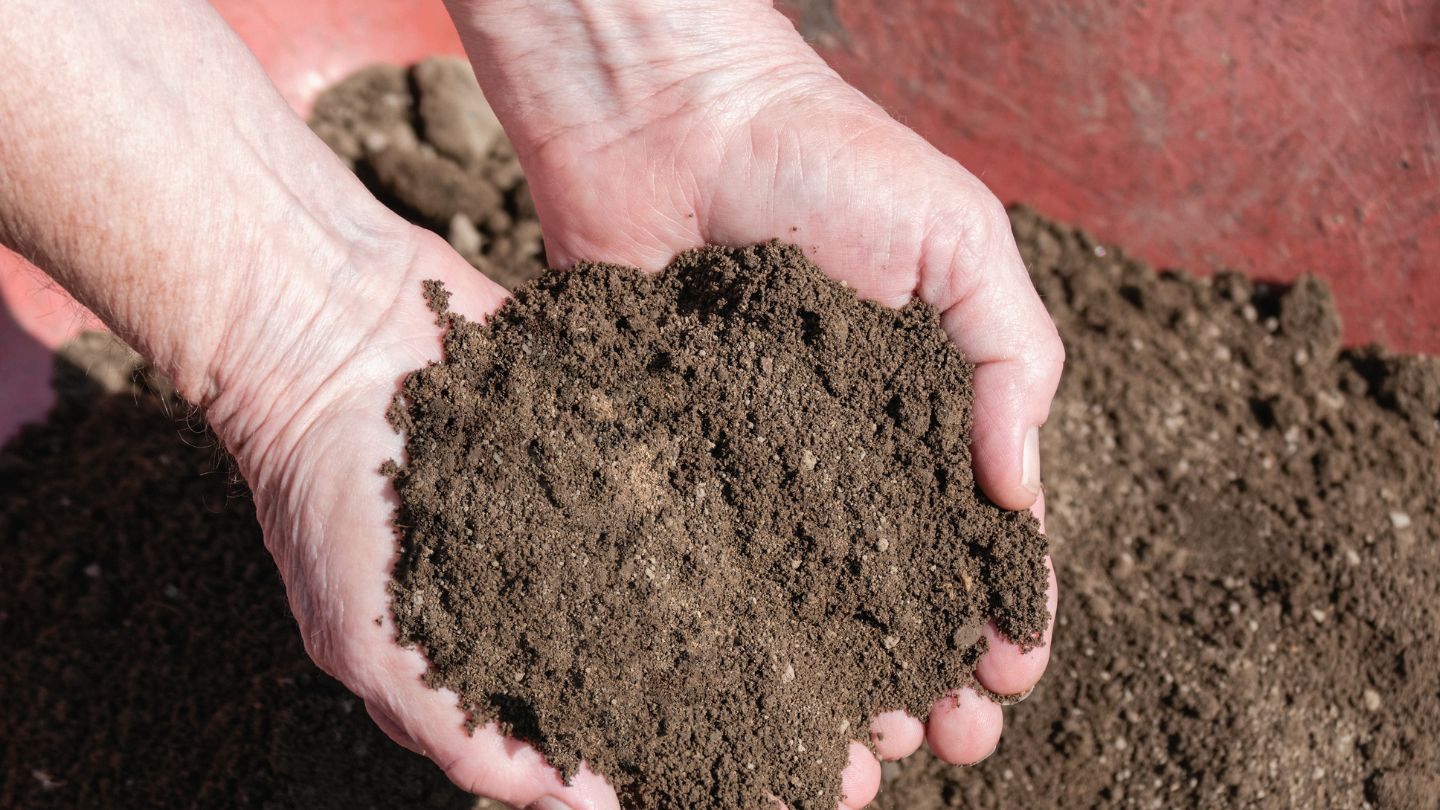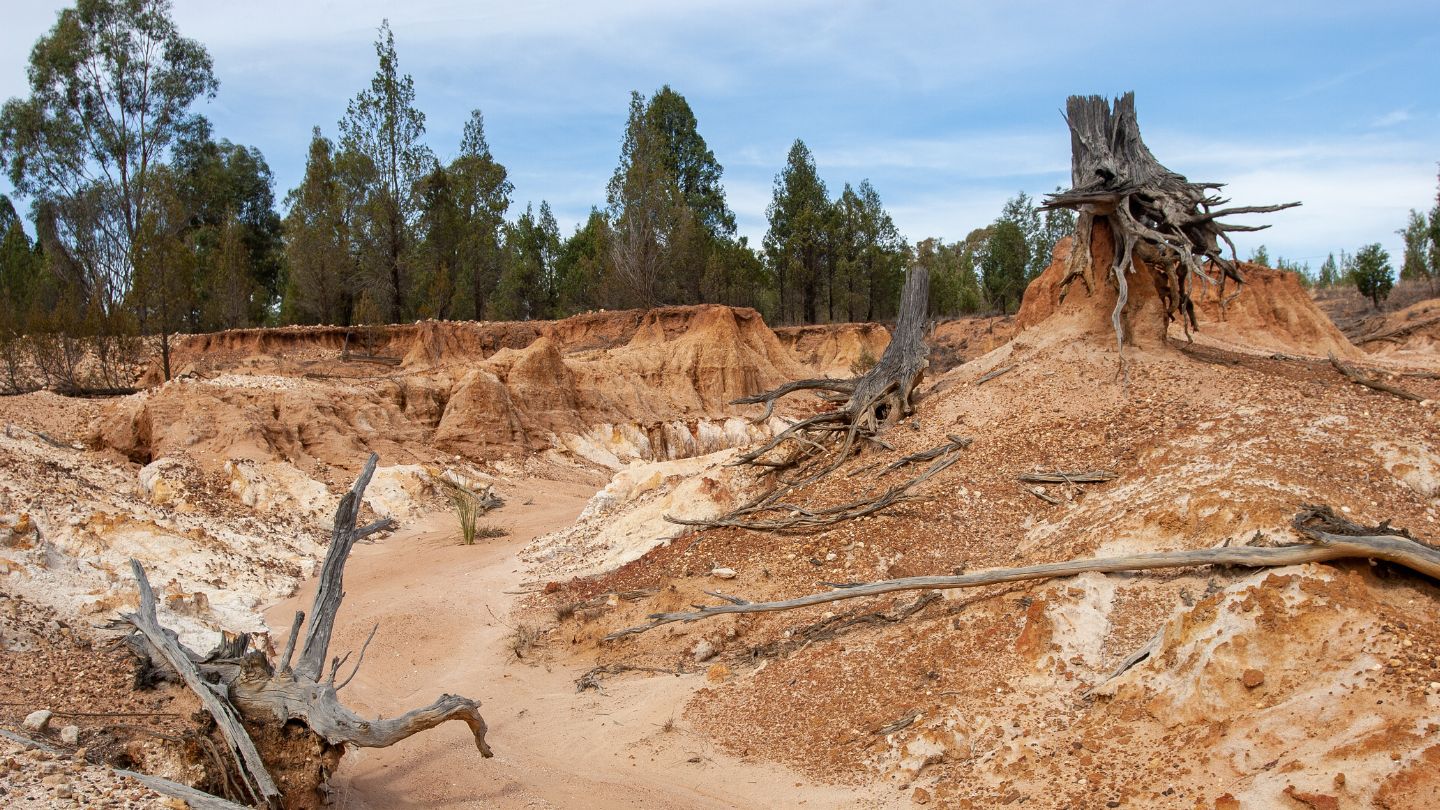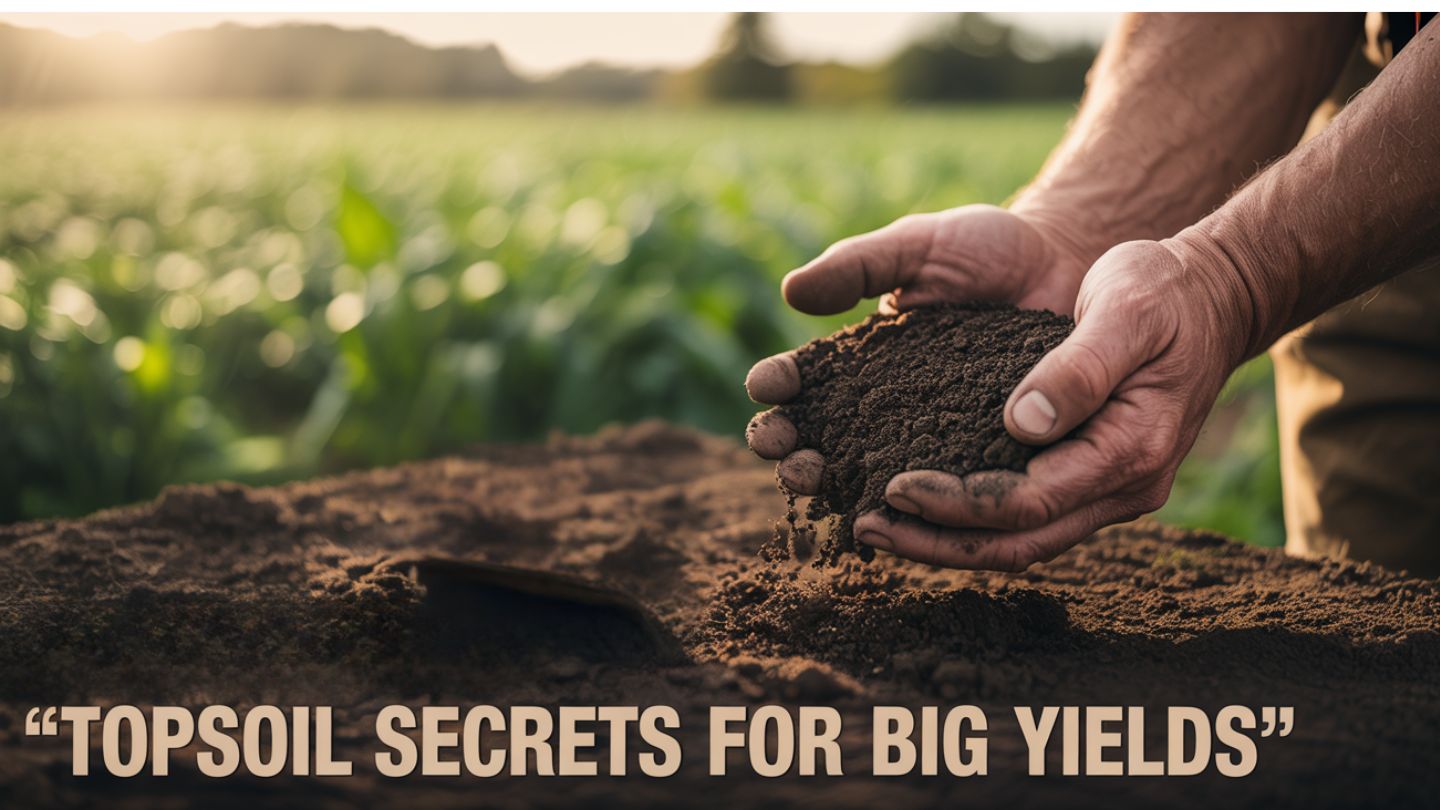Healthy topsoil is the foundation of thriving agriculture and plays a vital role in supporting sustainable farming practices. It provides essential nutrients that crops need to grow, helps retain moisture to prevent water loss, and fosters biodiversity within the soil. Without healthy topsoil, farming becomes less productive and more challenging, directly impacting food security and environmental health. In this blog, we’ll dive into the importance of topsoil health, how it influences crop growth and yields, and the steps we can take to preserve this critical resource. Understanding topsoil is key to ensuring the future of sustainable agriculture for generations to come.
Key Takeaways
- Healthy topsoil is essential for agricultural productivity, providing vital nutrients and enhancing plant growth while reducing the need for chemical fertilizers.
- Soil erosion poses a significant threat to topsoil health, impacting both agricultural productivity and environmental quality through nutrient depletion and pollution of waterways.
- Sustainable practices, such as crop rotation and cover cropping, are critical for maintaining topsoil health and improving soil structure, promoting biodiversity, and enhancing agricultural sustainability.
The Role of Healthy Topsoil in Agriculture
Healthy topsoil is the cornerstone of agricultural productivity. It is rich in essential nutrients and necessary nutrients for plant growth and development. This nutrient-rich layer ensures plants access essential elements like:
- Nitrogen
- Phosphorus
- Potassium
Without these nutrients, crop yields would plummet, reducing food production and causing economic instability for farmers. Moreover, healthy topsoil is abundant in organic matter, which significantly reduces the need for chemical fertilizers. Organic matter enhances soil fertility by improving its structure and water-holding capacity. This means that crops can grow more robustly and yield higher outputs without the detrimental environmental impacts associated with synthetic fertilizers. Additionally, healthy topsoil can store substantial amounts of carbon, helping to mitigate the effects of greenhouse gases and combat climate change.
Practices such as crop rotation play a pivotal role in maintaining soil health. Varying crops across different seasons boosts nutrient cycling and soil fertility. This practice enhances organic matter and disrupts pest cycles, leading to healthy crops and more sustainable farming.
Characteristics of Healthy Topsoil
Healthy topsoil is typically found in the top two to eight inches of the earth’s surface and is teeming with organic matter and microorganisms. This rich layer sustains plant life and maintains soil health. Companies focus on providing high-quality organic mulches that can enhance soil health by improving its structure and nutrient content.
Quality topsoil plays a vital role in supporting a thriving microbial ecosystem that decomposes organic material, improving soil structure and fertility. Well-balanced soil composition promotes robust root development, enabling plants to absorb more nutrients and water, leading to healthier crops.
High-quality topsoil offers several benefits:
- Effectively manages moisture by retaining water while allowing for adequate drainage, preventing both waterlogging and drought stress in plants.
- Enhances plant productivity, leading to faster germination and substantial growth.
- Minimizes weed growth by favoring desirable plants.
- Contains diverse soil organisms that enhance the resilience of soils against diseases and environmental changes, contributing to overall soil quality.
Benefits of Maintaining Healthy Topsoil

Maintaining healthy topsoil has a direct and profound impact on agricultural productivity. Healthy soils lead to higher crop yields by providing stable nutrients and improving water retention, keeping the soil healthy. This resilience is especially beneficial during dry periods, ensuring crops survive and thrive despite adverse weather to maintain soil fertility.
Vegetative cover, like cover crops, prevents soil erosion by stabilizing the soil with their roots. Erosion depletes soil nutrients and causes sedimentation in water bodies, affecting water quality and aquatic ecosystems. Climate change, with its increasing rainfall and extreme weather events, can exacerbate soil erosion, making the maintenance of healthy topsoil even more critical.
Healthy topsoil helps to mitigate climate change by enhancing carbon sequestration and reducing greenhouse gas emissions, while it also helps to sequester carbon dioxide. Improve soil health through better agricultural soil usage, which conserves ecosystems, promotes biodiversity, and enhances planetary health.
Soil Erosion: A Threat to Topsoil Health

Soil erosion threatens topsoil health, caused by natural factors like water and wind, and mechanical practices such as over-tilling and over-grazing. These activities strip away the nutrient-rich layer of soil, leading to nutrient depletion, soil degradation, and reduced agricultural productivity.
The impacts of soil erosion are far-reaching, affecting not only soil health but also environmental health. Once eroded, soil becomes sediment that can pollute waterways and harm aquatic ecosystems. This sedimentation can introduce buffering potential pollutants into water bodies, posing risks to both human health and water pollution, as well as increasing water runoff.
Living roots reduce soil erosion by stabilizing the ground and providing physical stability for soil organisms. By maintaining a healthy root system, including plant roots, we can significantly reduce soil erosion and promote the overall health of our agricultural lands, including living plant roots.
Improving Soil Structure with Organic Matter
Organic matter is critical for improving soil structure. It promotes the formation of stable soil aggregates, enhancing water infiltration and reducing soil compaction. This improved structure enables better water retention and root growth, resulting in healthier plants and more efficient preservation of topsoil. Additionally, the use of organic materials can further enhance these benefits.
Management practices such as minimal tillage and adding crop residues are effective strategies for increasing soil organic matter. These practices:
- Reduce soil disturbance, preserving soil structure
- Enhance microbial activity essential for breaking down organic matter into nutrient-rich components
- Significantly reduce erosion by enhancing aggregate stability
- Increase water infiltration rates
Moreover, soil’s organic matter serves as a nutrient reservoir, cycling nutrients from organic to plant-available forms. This cycling process sustains plant growth and maintains soil fertility, making organic matter indispensable for soil health.
The Role of Soil Organisms in Topsoil Health
Soil organisms are the unsung heroes of topsoil health, playing a pivotal role in nutrient cycling and soil fertility. Beneficial microorganisms, including soil microbes, decompose organic matter, releasing nutrients essential for plant growth. Certain microorganisms fix atmospheric nitrogen, making it available to plants and enhancing soil fertility, while also interacting with soil particles.
Soil fungi, with extensive hyphal networks, significantly enhance nutrient uptake and plant health. Fungi and bacteria break down nutrient-rich organic matter into forms that plants can readily absorb. This process supports plant growth and contributes to the overall health and resilience of the soil ecosystem.
A diverse and balanced soil ecosystem optimizes plant growth and supports agricultural systems. Higher soil biodiversity:
- breaks disease cycles
- stimulates plant growth
- enhances water retention and nutrient recycling
Without a healthy soil food web, plants struggle to get nutrients and are more vulnerable to pests and diseases. Ecosystem services play a crucial role in this process.
Sustainable Practices for Topsoil Management
Sustainable practices are crucial for managing and maintaining healthy topsoil. Effective practices include crop rotation, cover cropping, and minimal tillage. These enhance soil biodiversity, reduce pest populations, and improve soil structure and fertility, aligning with soil health principles and regenerative agriculture.
Maintaining soil cover is crucial for health. Plant cover crops to optimize benefits by enhancing soil structure and nutrient availability. Using locally sourced mulch supports plant sustainability by minimizing transportation emissions and promoting environmental health. Additionally, incorporating a cover crop can further improve soil health.
Conservation practices like contour farming and terracing significantly reduce erosion and improve water infiltration, contributing to reducing soil erosion. Monoculture farming can negatively impact these efforts.
Nurturing the Foundation of Agriculture
Healthy topsoil is the backbone of sustainable agriculture, playing a crucial role in improving crop yields, maintaining soil fertility, and protecting the environment. Its ability to nurture plants, retain moisture, and reduce reliance on harmful chemicals makes it an irreplaceable resource for farmers and the planet alike. By prioritizing the health of our topsoil, we can secure a resilient agricultural future while addressing pressing environmental challenges like soil erosion and climate change.
To support the health of your soil, Mulch Pros offers high-quality solutions, including premium topsoil in Cumming. Our commitment is to help you enhance your soil’s productivity while contributing to sustainable land management. Take the next step toward a thriving and eco-friendly garden or farm by investing in topsoil today. Together, we can build a healthier, more sustainable future.
Frequently Asked Questions
What is topsoil, and why is it important for agriculture?
Topsoil is the uppermost layer of soil, rich in organic matter, nutrients, and microorganisms. It is essential for agriculture as it provides the nutrients plants need to grow, improves water retention, and supports biodiversity, all of which contribute to higher crop yields and sustainable farming.
How does soil erosion impact agricultural productivity?
Soil erosion depletes the nutrient-rich topsoil layer, reducing soil fertility and negatively affecting crop growth. It also causes sedimentation in waterways, harming aquatic ecosystems and leading to water quality issues. Preventing erosion is critical for maintaining productive and healthy soil.
What are some sustainable practices to maintain healthy topsoil?
Sustainable practices include crop rotation, cover cropping, minimal tillage, and using organic mulch. These methods improve soil structure, enhance nutrient cycling, reduce soil erosion, and promote biodiversity, ensuring long-term soil health and agricultural productivity.
How does organic matter benefit soil health?
Organic matter improves soil structure, increases water retention, and enhances nutrient availability. It serves as a food source for microorganisms that decompose it into essential nutrients for plants. Adding compost or crop residues is an effective way to boost organic matter in soil.
Can healthy topsoil help combat climate change?
Yes, healthy topsoil can store large amounts of carbon, reducing greenhouse gas levels in the atmosphere. This process, known as carbon sequestration, helps mitigate climate change while improving soil fertility and agricultural sustainability.


